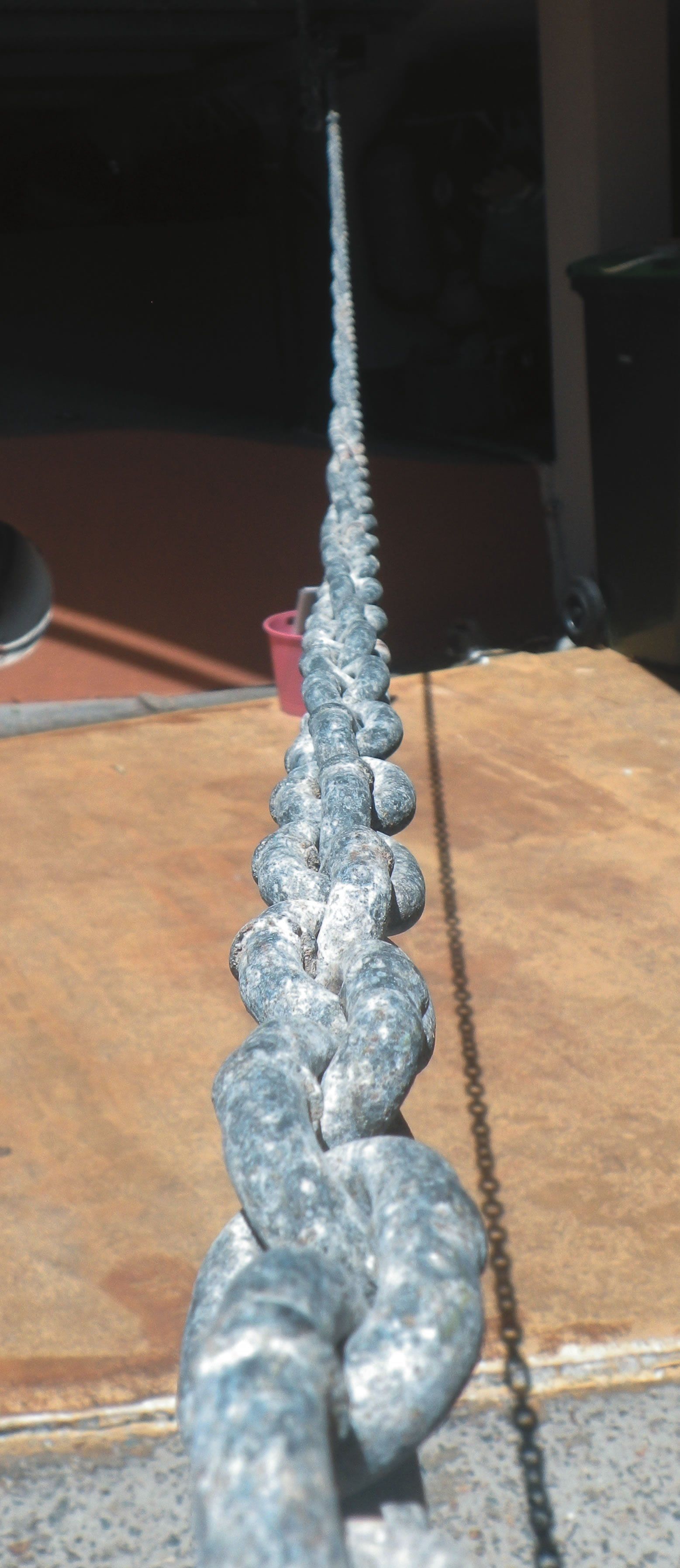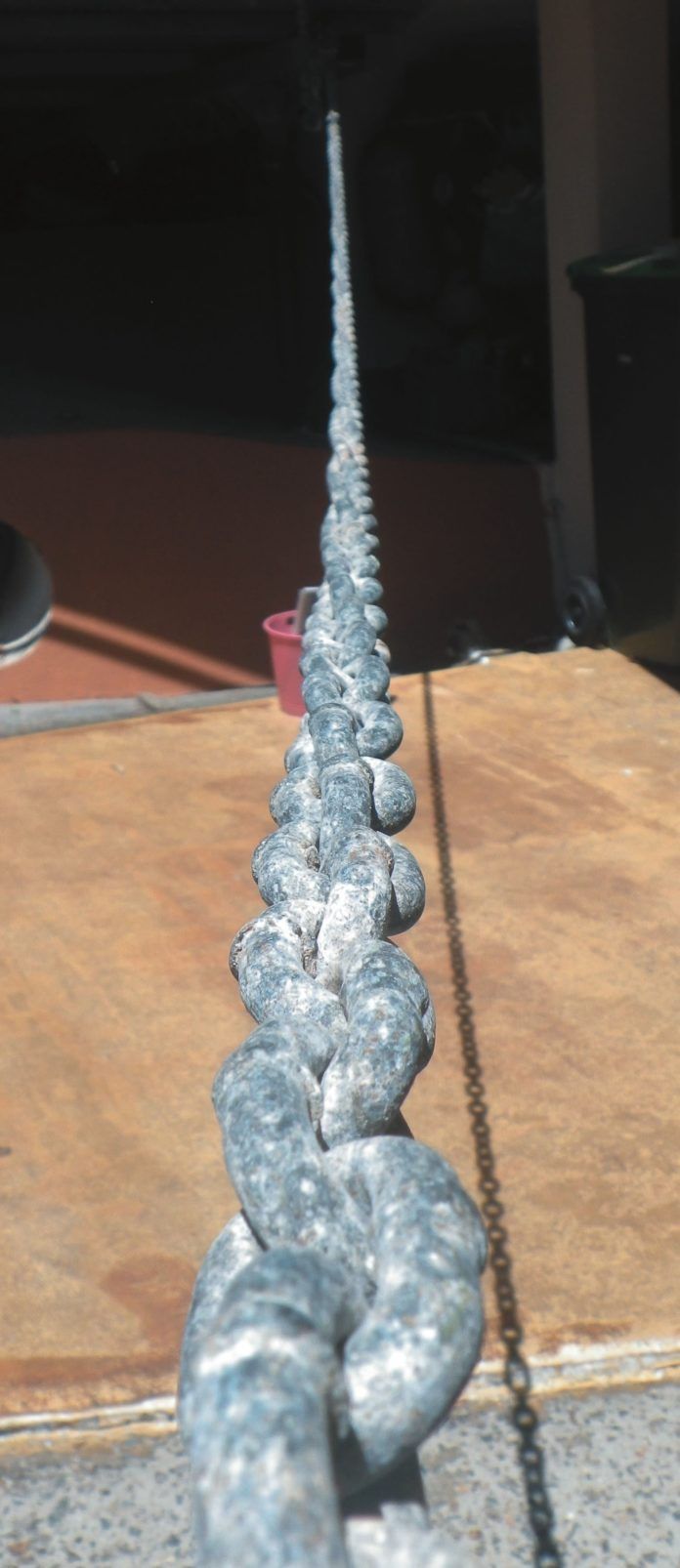
We know the theory behind using anchor swivels: The swivel releases any twists in the chain when an anchored boat swings through 360 degrees or more. Still, we question the logic of using them. Our skepticism is supported by our own experience, previous testing, and input from long-term cruisers, but we wanted to devise a test to investigate chain twisting.
We took 30 feet of 5/16-inch chain and freely suspended it roughly horizontal between two secure points. We tensioned the chain to about 90 pounds of load. We had a swivel at both ends; the top swivel was a standard cheap swivel that allowed us to manually twist the chain. At the anchor end, we tried two different name-brand swivels, the Mantus swivel (for sizes 5/16-inch to 3/8-inch chain) and a 5/16-inch, galvanized Acco swivel.
Working from the top, we twisted the chain to find out how many twists produced enough torque to allow the attached Mantus or Acco swivel to release the turns.
The results were surprising. The Acco galvanized swivel took eight complete twists in the chain before it started to turn, and the Mantus swivel took 6.5 turns. Given that typically skippers might be deploying three times the amount of chain we used in our test, it is obvious that several more turns-possibly three times as many-would be required for the bottom swivel to make any difference.
In order to transmit torque onto the swivel, the chain will need to be free of the seabed, requiring more load (about 160 pounds for 100 feet of 5/16-inch chain in 20 feet of water), and the torque required to release twists will be higher than in our simple test.
In our view, it is unlikely that the swivel will reduce anything but a large number of twists, and these twists could be removed more safely and easily by slowing down the retrieval once the anchor clears the bottom. A slower retrieval also prevents the hydrodynamic force on an unbalanced anchor that might cause it to spin. In fact, anchor spin upon retrieval with a high-speed windlass is probably the most likely cause of twist, and is often mistakenly attributed to the windlass itself. Ironically, if your anchor rotates in a beneficial direction as it comes up, the swivel might actually prevent the anchors rotations from untwisting the chain.
If your anchor chain is twisted to the point that it is forming hockles or causing it to jump from the windlass, you will want to deploy all the chain, untwist it manually, and load it back into the locker. You can do this ashore (and mark your chain lengths at the same time, if needed), but it is often easier in deep water.
Unless you are retrieving the anchor so fast that it spins like a whirl-a-gig, or the tide and wind are spinning you around like a barber pole, you should not have to untangle it again for months or more.







































